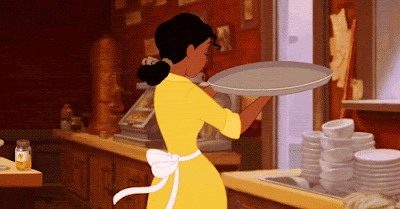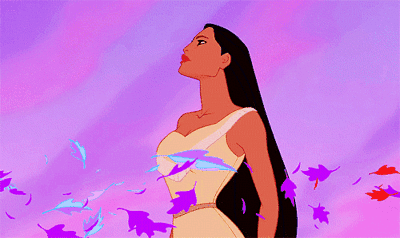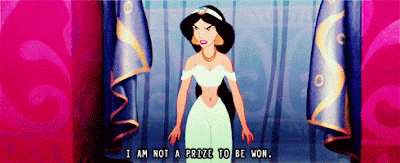I just watched Beauty and the Beast and it got me
thinking about the link between feminism and fairy-tale princesses. Belle is a
book-wielding, beast-taming feminist without a doubt, but where do the other
princesses from the Disney canon stand on the feminist scale? Mulan and Merida
are somewhere in the top echelon with their cross-dressing, crossbow shooting
stunts while Cinderella and Aurora are feminist cop-outs. It’s encouraging to
see more and more Disney princesses move from damsel in distress to dame that
don’t give a damn, showing kids everywhere that girls can be kick ass too. So,
I present to you my definitive list of Disney princesses ranked according to
their feminist credentials. Extra points for minority maidens such as
princesses of colour, LGBT ladies (Elsa I’m looking at you) and red heads.
1. Mulan
Mulan doesn’t need a man to save her. In
fact, she saves the man and China, too!
2. Tiana
Tiana is unique in that she has a real job, even after she becomes
royalty. She’s a successful restaurant owner, chef and a princess, talk about baking your cake and eating it too.
3. Elsa
Elsa is the most powerful of the Disney
princesses – she can freaking make it snow. Try that on for size, Cinderella.
Also, she knows that the love we have for our sisters is the truest and purest
of all.
4. Pocahontas
Pocahontas saves John Smith, turning the
damsel in distress trope on its head. In the end it’s head over heart for her
as she decides not to ride off into the sunset with Smith, all for the good of
her tribe.
5. Merida
Oh Merida of the red mane. She is a
master of the crossbow and has bigger things on her mind than boys. The fearless Scott sits solidly at no 5.
6. Belle
Belle, Belle, beautiful Belle. A broad
who knows the power of a good book. Not afraid to go against the grain, she was
unashamedly herself before geek chic was a thing.
7. Jasmine
Jasmine of ‘I’m not just some prize to
be won’ fame played the men at their own game. She memorably pretended to be under
Jaffar’s spell to overthrow him. Free-spirited, she also ran away from her castle
in a bid for independence.
8. Rapunzel
Rapunzel overcomes serious Stockholm
syndrome to escape from her tower. Like Merida,
she wields a weapon with great panache.
9. Snow White
Snow white does quite well until she
messes it all up by eating that damn apple. The Prince’s kiss revives her,
further cementing the 'women need to be saved' theme of the older princesses.
10. Cinderella
Cinderella is a feminist flop. She
allowed herself to be used as a slave by her step-family until a handsome
prince came and whisked her off her tiny feet. She takes no responsibility for
her own life.
11. Ariel
Ariel sells her voice in exchange for a
chance to seduce Prince Eric with her newly minted legs. Need I say more.
12. Aurora
Aurora gets the last spot because she
literally sleeps through most of her story until she is saved by a prince. Also, hobbies include weaving.












Comments
Post a Comment